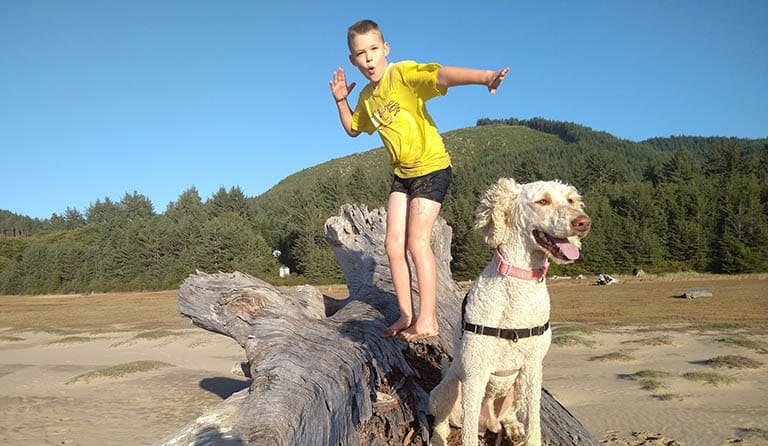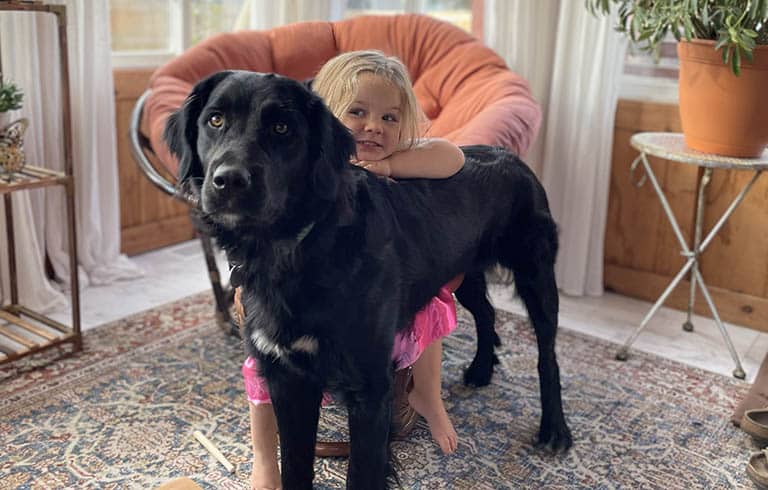In the heartwarming companionship between children and pets, encouraging a happy and safe environment is important. While the bond can be deeply rewarding, understanding and respecting the unique needs and signals of pets is crucial. Furry friends can be wonderful companions, but it’s essential to prioritize the comfort of pets and kid safety with pets.
This blog dives into the key elements of creating a secure space for the interaction between children and their furry friends, be it the family pet or animals encountered in public. From recognizing warning signs to instilling respect towards animals in kids, explore these practical tips to ensure a relationship filled with joy and safety.
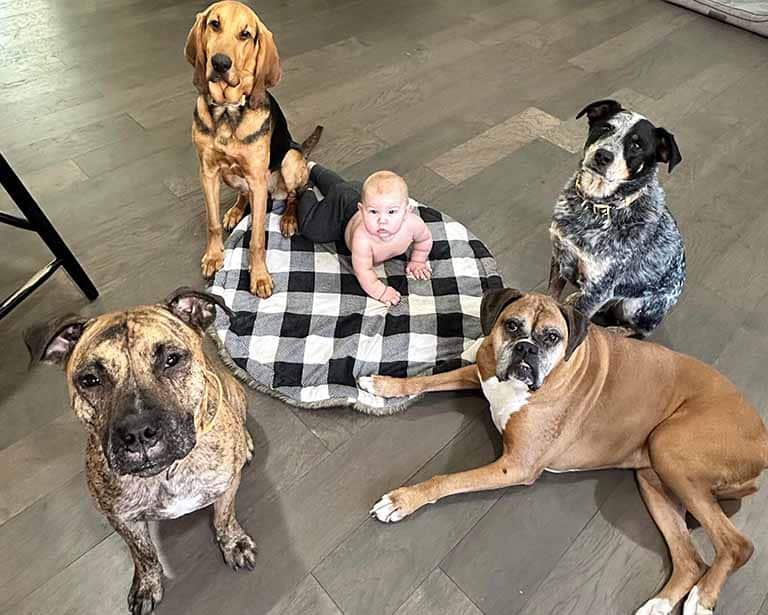
Recognizing the Warning Signs Given by Pets
Children can be very affectionate towards cats and dogs. They show their fondness through hugging, kissing and laying on top of the animal. But not all pets enjoy these physical expressions of love. Kids also tend to make unpredictable and quick movements. Animals can become triggered by these actions. Education about an animal’s body language is a key component in preventing a situation from dangerously escalating between a pet and a child.
When a dog or cat is anxious, uncomfortable or afraid they show it in their mannerisms. Cats for instance, may flatten their ears, puff up their fur or twitch their tails when feeling threatened. A dog, on the other hand, might exhibit signs of stress such as yawning, lip licking or turning their head away. When these signals are ignored the pet may resort to more obvious communication like hissing, growling, stiffening the whole body or physically walking away. When a pet has reached their limit, the cat or dog may nip, bite or scratch the child to send a clear message that they do not want to be bothered any more.
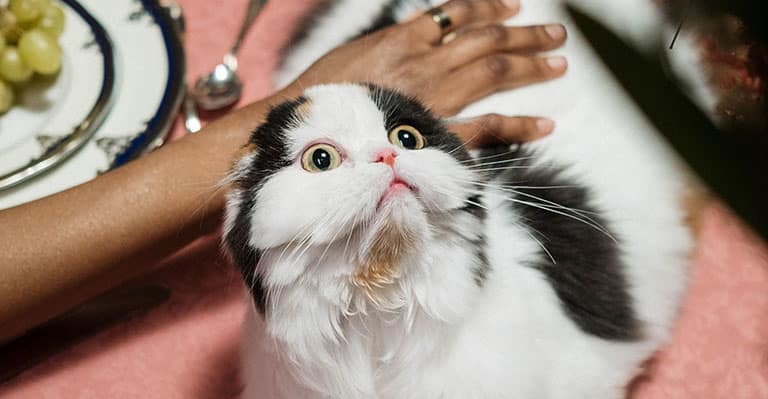
Supervision is Key
One of the most critical aspects of ensuring safety between a child and pet is supervision. Children and pets can be unpredictable, and accidents can happen when left unattended. Kids that are below the age of six are at a higher risk since they are less likely to understand a pet’s body language.
Being physically present when a child and pet are in the same room together is a great way of keeping both safe and comfortable. Paying consistent attention to how a kid and animal are interacting with each other allows the parent to intervene when necessary. It is a good idea to stay close by to quickly leap into action if you have reservations about the relationship between a pet and a child. Prevent yourself from getting distracted by putting aside your cell phone and keeping the TV on a low volume.
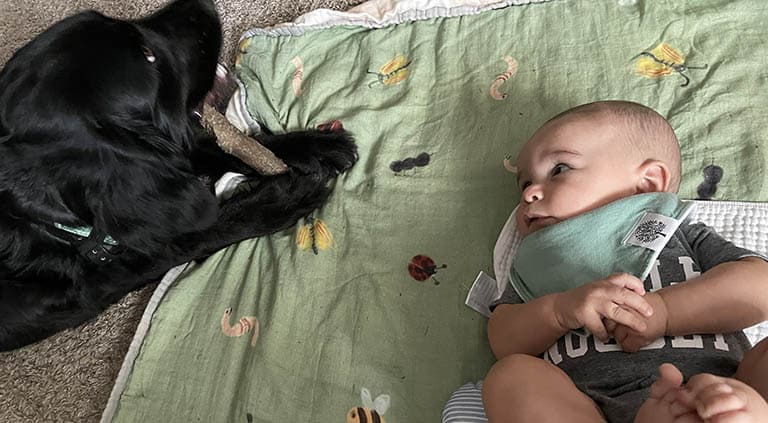
Show Kids How to Properly Handle a Pet
Teaching children how to handle pets with care and respect involves fostering empathy and responsibility. Begin by showing the importance of understanding the animal’s needs and feelings. It is important to describe how the pet feels when their tail is pulled or when their sleep or eating is disrupted. The pet owner can motivate the child to establish a connection between their own emotions when faced with actions they dislike and the potential feelings of the pet in unpleasant situations. Encourage gentle interactions by demonstrating the proper way of petting and holding the pet. The child can be shown how to have a calm and non-threatening approach.
Explain to the child the importance of reading the animal’s body language to understand if the pet is giving consent or not. This concept can be practiced by asking the child questions about what mannerisms the pet is currently displaying in a situation. An exercise like this helps to create awareness to know if the body language is communicating that it is good to continue or a signal to stop.
Instill a sense of responsibility by involving children in routine care tasks that are age appropriate. Have the kid help you with putting the pet’s toys away, refilling food and water bowls and brushing out the pet’s coat. Taking part in these actions helps a child to learn about caring for others and to not see the pet as a stuffed animal.
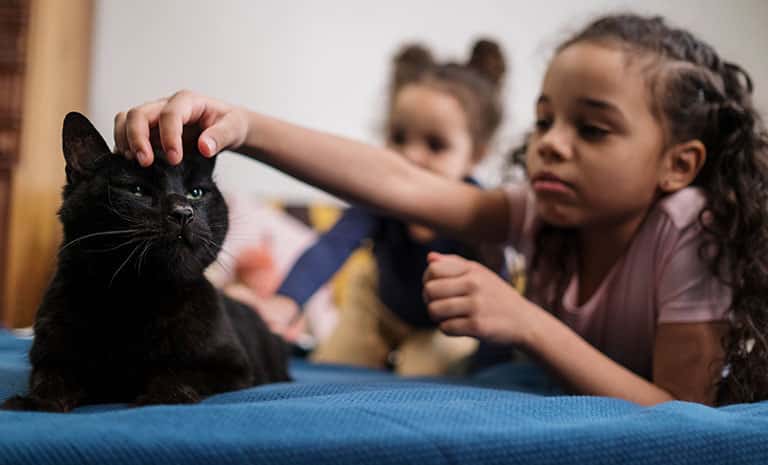
Setting Boundaries for Kids and Pets
Everyone needs a break from time to time, and our furry friends are no exception. Pets, especially cats, need an escape route when they are feeling overwhelmed. An animal that feels trapped or cornered may display dangerous behavior. Create designated spaces for your pets where they can rest or have some alone time away from kids. This can be a spare bedroom, their crate or other locations. Teach children to respect these boundaries and to not enter the pet’s safe place without permission.

What To Do for Pets To Help Keep Kids Safe
Proper Training and Socialization
Dogs, in particular, benefit from proper training and socialization. Obedience classes teach trust and proper etiquette to aid owners and dogs through different environments. It is also a good idea to expose the canine to various situations and people, including children. This helps them become well adjusted and less likely to react aggressively in unfamiliar situations. Experts recommend exposing cats to various stimuli such as different sounds and textures to enhance their adaptability.
Regular Pet Visits
Maintaining the health and well-being of your pet is vital for the safety of children. Regular vet checkups can identify any potential health issues that may impact the cat or dog’s behavior or mood. An unwell pet can become irritable or anxious, which could lead to unexpected reactions around kids. If you notice anything unusual or a change in your animal’s normal routine, schedule an appointment with your vet as soon as possible.
Proper Etiquette With Other People’s Pets
Asking for permission before approaching someone else’s dog or cat helps to prevent a negative situation. Some animals do not enjoy socializing with others or are skittish around children. Teach kids to always ask first before walking up to an animal and that it is okay if the owner declines an introduction. If the pet owner approves, then the best way for a child to approach the animal is from the side in a squatted position. Pets consider someone unknown coming at them head-on as confrontational. They also do not enjoy someone leaning over them or reaching up over their head.
A hand held out low from a distance gives the animal the option to approach or not. It is best if children do not shove their hand in the face of the animal. Since dogs and cats gather information through smell, it’s a good idea to teach children to let a pet sniff their hand or even their clothes. Nice and gentle petting can follow after a positive introduction.
Fostering a Wonderful Relationship Between Children and Pets
By recognizing warning signs, teaching proper handling, honoring boundaries and encouraging respect, the foundation is laid for a positive relationship between children and their furry friends. Maximize the joy that comes from this type of companionship through training, socialization, regular pet visits and a commitment to supervision. These actions help create an environment where safety and friendship can co-exist for years to come.
